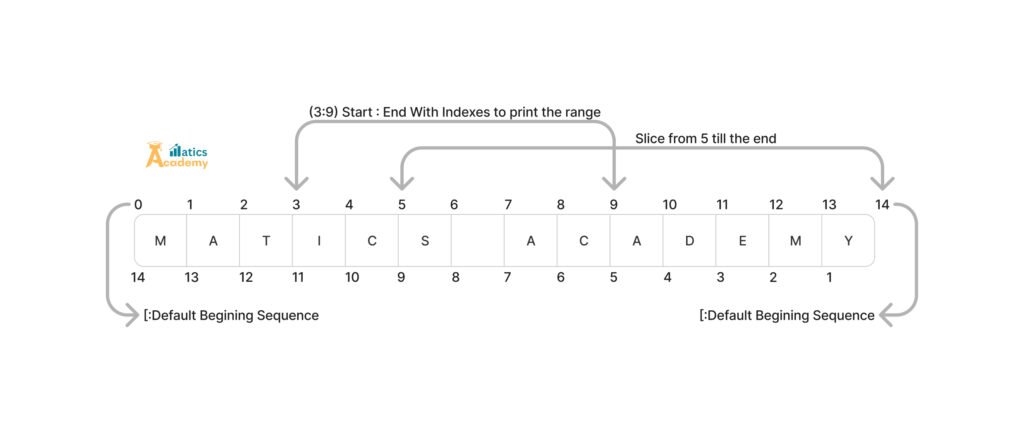Accessing elements in a Python list is fundamental to utilizing the full potential of this versatile data structure. Lists in Python are ordered, mutable, and can contain elements of various data types, making them ideal for a range of tasks. Below is a detailed overview of different ways to access list elements efficiently.
There are 5 different ways for Accessing the list elements:
- Indexing: Indexing helps you access individual list elements. Python uses zero-based indexing.
- Negative Indexing: Use negative indexing to access items from the end of the list.
- Slicing: Slicing extracts sublists using the
start:endformat. - Slicing with Negative Indexes: You can combine slicing with negative indexes to retrieve sublists from the end.
- Checking if an Item Exists: You can check if an element exists in a list using the
inkeyword and return the Boolean value as the result.

Examples for Accessing List Items:
Example for Indexing:
fruits = ["apple", "banana", "cherry", "date", "elderberry"] print(fruits[0]) print(fruits[2])
Example for Negative Indexing:
fruits = ["apple", "banana", "cherry", "date", "elderberry"] print(fruits[-1])
Example for Slicing:
fruits = ["apple", "banana", "cherry", "date", "elderberry"] print(fruits[1:4])
Example for Slicing with Negative Indexes:
fruits = ["apple", "banana", "cherry", "date", "elderberry"] print(fruits[-4:-1])
Example for Checking if an Item Exists:
fruits = ["apple", "banana", "cherry", "date", "elderberry"]
print("date" in fruits)Interview Questions
1. How do you access the first and last elements of a Python list?(Google)
Answer:
my_list = [1,2,3,4,5] print(my_list[0]) print(my_list[-1])
2. Explain the difference between positive and negative indexing.(Amazon)
Answer:
Positive Indexing: Starts from 0, moving left to right.
Negative Indexing: Starts from -1, moving right to left.
3. How do you extract a sublist from a list?(Microsoft)
Answer:
Use slicing: list[start:end].
list = [10, 20, 30, 40] print(list[1:3])
4. How would you access elements in a nested list?(Meta)
Answer:
By chaining indices:
nested_list = [[1, 2], [3, 4]] print(nested_list[1][0])
5. How do you access a range of negative indices?(TCS)
Answer:
Use slicing with negative values:
list = [10, 20, 30, 40] print(list[-3:-1])
Quizz time with Python Lists
Question
Your answer:
Correct answer:
Your Answers
